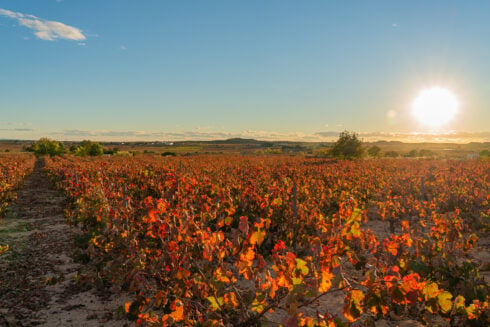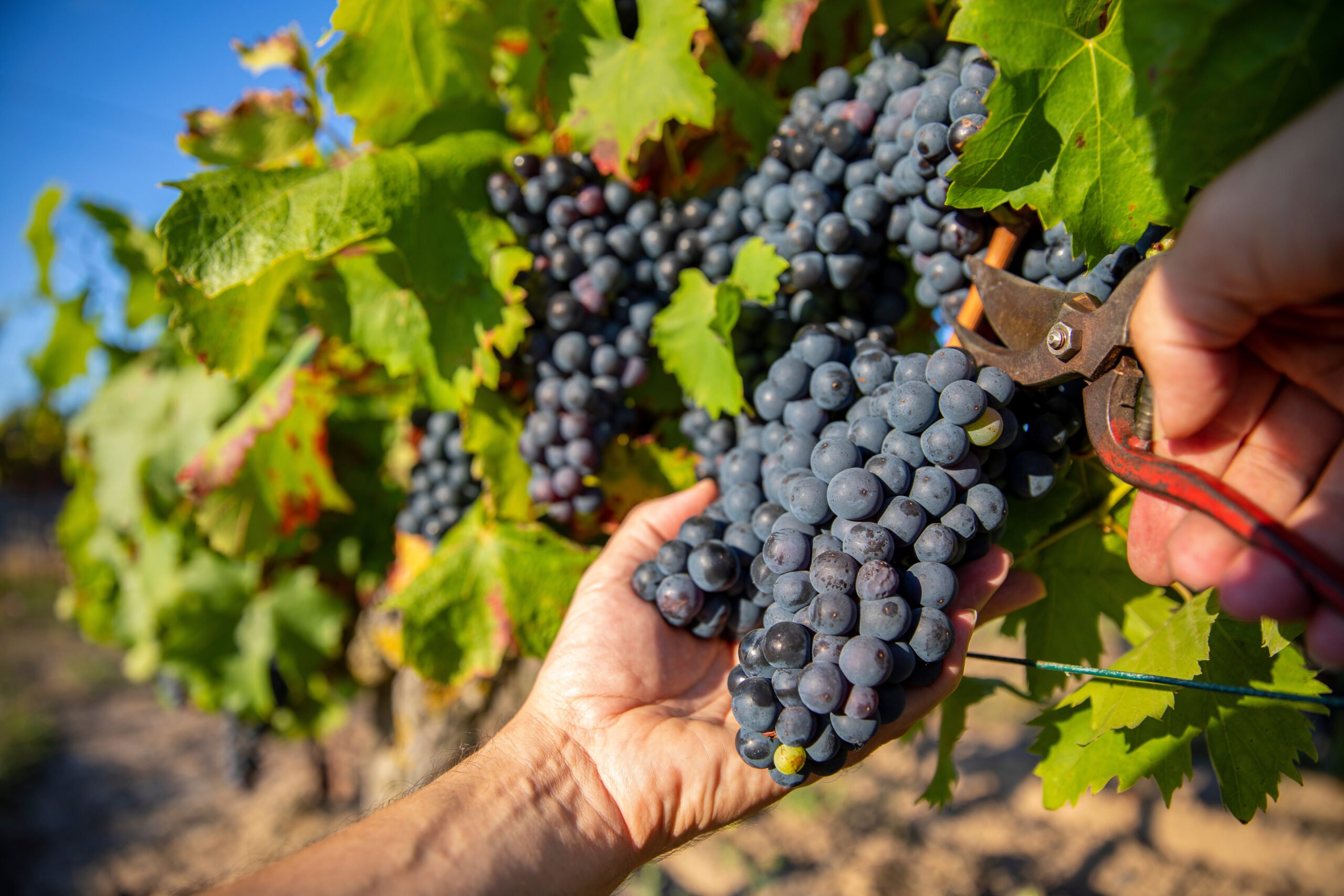WINE is everywhere you look in Spain and as the third largest wine-producing country globally is embedded in the culture.
Perhaps you like to try something different each time you take a trip to the supermarket or always pick up the same bottles, regardless, all wines have something in common. The grapes grown all went through the same cycle.
After the winter, the first buds appear on the vines, as the weather warms up shoots and leaves start to grow. Into May the vine bursts into flower and the first fruit starts to set.
The summer months ripen the berries and then post summer and into the Autumn the harvest begins, the grapes are picked and the transformation of turning grapes into wine begins.

In Spanish this is known as the Vendimia, the direct translation being Vintage. The year displayed on your bottle is the year from which the grapes were grown and picked. The timing of the cycle is flipped in the southern hemisphere, but the growing process remains the same.
The winery is at the mercy of mother nature which is why two wines from the same producer from different vintages can taste vastly different and why you will hear people talk about certain years being a ‘great vintage’.
Modern technology has reduced the variability with the winemaker able to have a greater influence. Timing when to harvest the grapes is a key step in the wine’s outcome. The timing depends on the ripeness of the grapes, which is measured by sugar, acid, and tannin levels (tannins are the dryness as you find in tea, these come from the grape skins and influence of oak barrels later).
Winemakers choose when to harvest based on the wine style they want to produce, while also considering weather factors like heat, rain, hail, and frost, which can affect the grapes and the vines. Harvesting can be done by hand or using machines. In southern Spain frost is not a factor but in France wineries will often light mini bonfires or candles between the vines to keep the grapes warmer.
Miguel Torres from Familia Torres Winery, perhaps Spain’s most famous producer, has described wine as ‘the canary down the mine’ in relation to climate change as its effects are becoming increasingly visceral.
Sparkling wines from Southern England now rival those of Champagne and the drought resistant grape varieties from Portugal have been introduced into Bordeaux to mitigate against increased temperatures.
The scariest predictions suggest that if temperatures rise by 2 degrees above the pre industrial average, then up to 29% of existing wine regions globally will be too hot and arid to produce wines and a further 41% will not be able to unless they introduce different grape varieties.
Spain is included in these figures but predominantly the central plains, with coastal regions more insulated.
We are fortunate in Southern Spain to have world class wineries on our doorstep.
From the famed Sherry houses in Jerez in the west, to mountain high wineries in the Sierra Nevada foothills.

The breadth of the styles and varieties competes with any other swathe of land globally and to find out more about this year’s Vendimia and the impact of climate change we can draw on the experience of two of the best. I sat down in discussion with Judiht Calvente from Bodegas Calvente and Clara Verheij from Bodegas Bentomiz to see what the reality is on the ground and their hopes for the 2024 vintage.
How would you initially describe this year’s vintage in terms of quality and characteristics?
Judiht: “This year our harvest is one of the best in recent times. The 2024 harvest is one of the best both in quality and quantity. Alcohol content is lower than a normal harvest, but the other parameters are suitable for obtaining quality wines.”
Clara: “It has been a remarkably good vintage this year for us for several reasons. It is surprising to see how well our vines have adapted to a minimum of rain. We have had very dry years, and this became more and more of a challenge for the vineyards. It rained a little in March and April and these quantities have been enough for the vines to thrive.”
What do you think wine lovers can expect from wines made from this vintage?
Judiht: “In principle (if all goes well) we can obtain high quality wines that could potentially be one of the best vintages ever. This year there have been two facts that have made the campaign so good: rain at the right time and mild temperatures throughout the summer.”
Clara: “This year’s vintage may be the best in the last 20 years!”
Have you noticed any impact from climate change over the last decade?
Judiht: “Yes, it rains less and less and when it does rain it does so more abruptly. The good temperatures extend over time, which makes optimal ripening of the grapes more complicated, especially in red varieties.”
Clara: “We have noticed climate change in the region, with the vintage going forward in time every year. Years ago, it was normal to start the harvest at the beginning or mid-August, but now this year we started on the 24th July. There is less and less rain in the region. What we always do and recommend is to use indigenous grape varieties. The heat is not such a big problem as we have cool breezes from the sea.”
If you could only take one bottle from the range of wines you produce to a desert island, what would it be and why?
Judiht: “A mother cannot choose between all her children, so she could not choose between just one of my wines. Which finger do you cut that does not hurt!”
Clara: If I had to take one wine then it would have to be our dry Moscatel de Alejandría. It is very refreshing, and I could drink it as long as I am stuck on the island!
Can the public visit the winery and buy from you?
Judiht: “Anyone can come to our winery in Jete to buy wine as we have a small shop where they can get our products. They can also come to visit us at any time of the year and take a tour of our facilities and a wine tasting with pairing. We have visits in two shifts each day: in the morning at 11.30am and in the afternoon at 4.30pm. It is essential that you make a reservation for the visit because they are small and personalised visits. Reservations for the visits can be arranged through the website www.bodegascalvente.com.”
Clara: “People can visit the winery in Sayalonga all year round from Wednesday to Sunday. They can have a guided tour with a tasting of our wines and choose to stay for lunch. You need to make a reservation on our website www.bodegasbentomiz.com. You can buy wine during your visit. We are happy to welcome people between 10am and 6pm.”
So, there you have it, an invite to visit two world-class wineries, have a look behind the scenes and stock up direct from the cellar door!
Ben Odgers, the author, is the founder of Spirits Sourcery. An expert in the drinks and retail industries, offering a variety of services, from sourcing the rarest wines and spirits, personalised labels for celebrations or gifting, unique experiences, and tastings events. Whatever you need Spirits Sourcery is the ultimate drinks concierge. Visit www.spiritssourcery.com or contact info@spiritssourcery.com to see how we can help.








